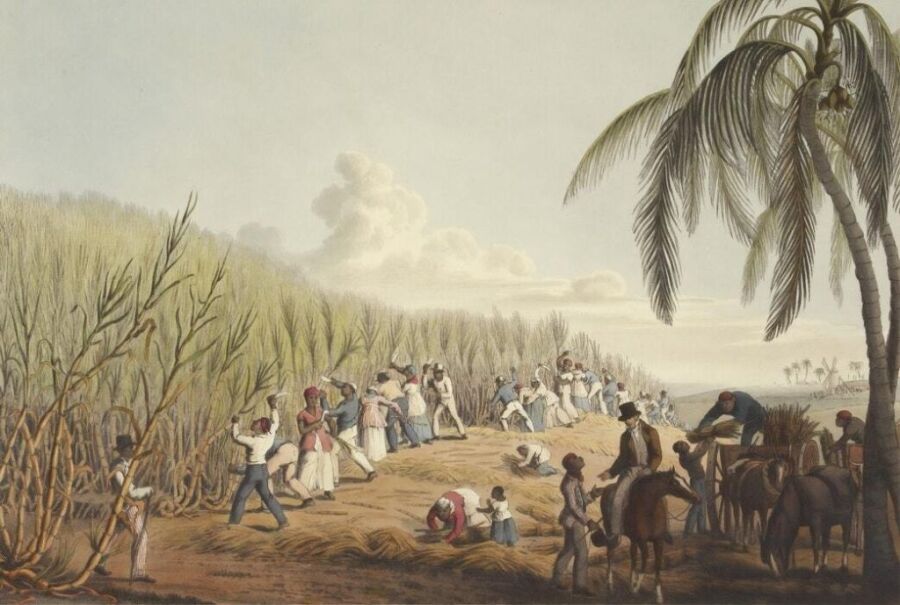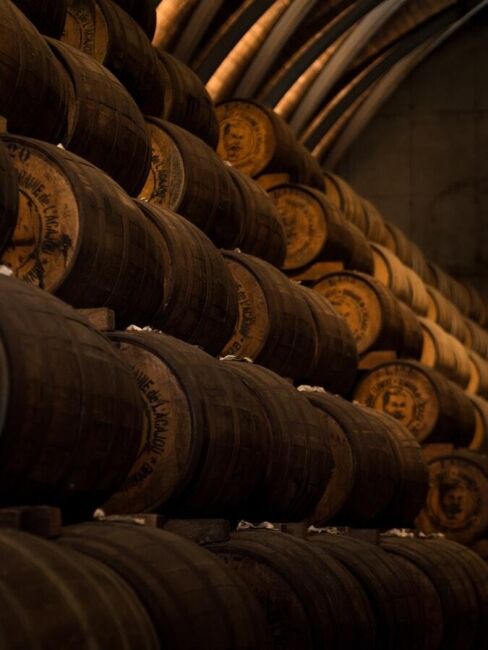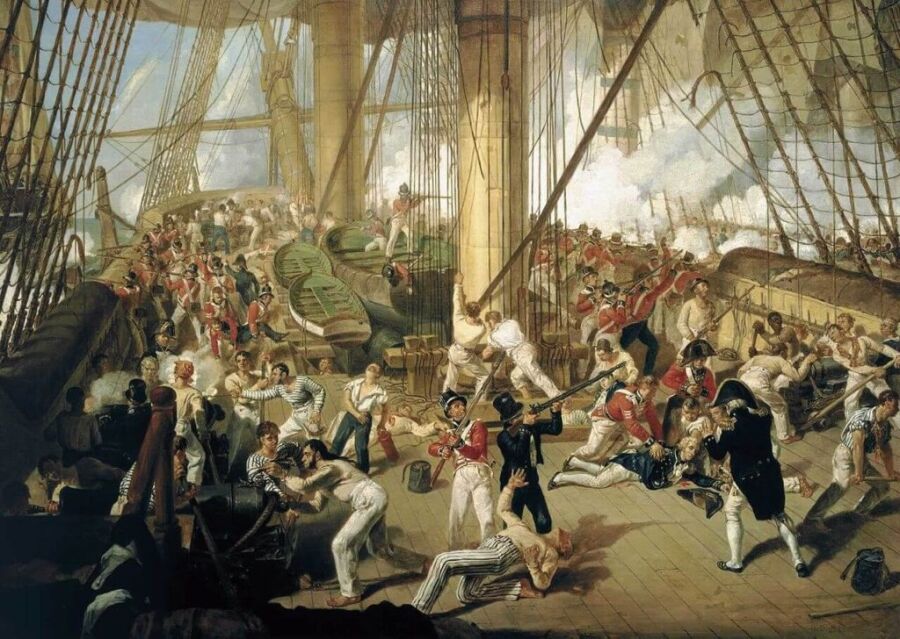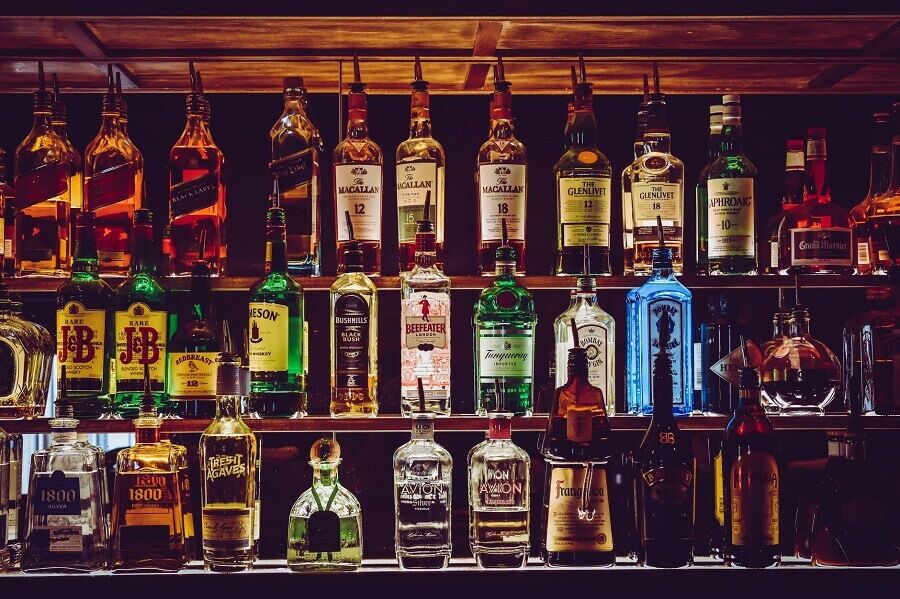The story of rum
Understanding Spices
Your cart is empty.
SUBTOTAL
£0.00

Understanding Spices
Rum is one of the most popular spirits in the world, consumed by millions every week. Whether it’s a straight shot of the good stuff or a delicious cocktail at a fancy bar, we cannot get enough of it. And, if one takes a look at the history of this alcohol, it appears that’s always been the case. From famous pirates sailing the high seas knocking back a bottle of rum, to newly-elected President Kennedy sipping on a Daiquiri when he found out he’d won – we love the stuff.
So, where did it all begin? Naturally, similar to any good pirate tale (more on that later), the origins of rum lie in the 17th century Caribbean. At this moment in time, the West Indies was the world’s powerhouse of production. Slaves, spices, alcohol, sugar and cotton made the world go round.
When the islands were discovered, it was quickly confirmed that with their warm, tropical climate, they were the perfect hosts for growing sugar cane. The industry took off, bringing great trade and wealth to the sugar barons. Of course, these vast sugar plantations needed manual labour to operate. Consequently, many slaves were sadly brought here from Africa to work in unbearable heat and terrible conditions.

In a cruel twist, it is these very slaves who went on to unwittingly enrich their wealthy owners with the discovery of rum. As the sugar cane was crushed and the juices were boiled in order to make sugar, there was one main industrial waste – molasses. It’s believed that colonial slaves on the island of Nevis realised that within molasses, there was just enough sugar to attract yeast. And so, they set about fermenting and distilling it into alcohol. Rum was born there and then.

Of course, it wasn’t quite what you and I are accustomed to today. Back then, in 1651, a Barbados document read: “the chief fuddling they make in the island is Rumbullion, alias ‘Kill-Devil’, and this is made of sugar canes distilled, a hot, hellish, and terrible liquor.”
Nonetheless, this ‘hot, hellish and terrible liquor’ surged in popularity, making the sugar barons of the Caribbean some of the wealthiest in the world. During this period, it’s estimated that the average American settler drank 3.5 gallons of the stuff every year.
Given the geographical location and the added factor of a beer shortage in Europe (heaven forbid), it’s not hard to see why.
As it spread north to the New England colonies, rum distilleries were set up in places like Staten Island and Boston. With an abundance of lumber and the necessary labourforce with good knowledge on the technical metalworking and cooperage skills required, colonial New England soon became a hub for production. Rum was the area’s largest and most prosperous industry, at one point accounting for up to 80% of all exports from New England. The drink became so popular it was known to be used as currency, even being accepted alongside gold in Europe.
As stated earlier, the irony of colonial slaves discovering rums was that the production of the spirit solidified the slave-dependent triangular trade across the Atlantic. The more slave traders and slaves who wanted rum, the more sugar production was needed in order to produce molasses. Of course, the more sugar that they needed, the more slaves were needed to produce that sugar on the islands. More slaves, bigger plantations and growth consequently meant there was more demand for rum from both the slaves and slave traders. It was an intensified feedback loop.
Naturally, because rum was stronger and cheaper it was also undercutting brandy – France’s export. The nation moved to ban the production of rum across their colonies in order to end the domestic competition. Consequently, like any good businessman would do, New England distillers undercut producers in the British Caribbean by buying the cut-rate molasses from French sugar plantations instead. Can you imagine the uproar from the British rum industry and, as a knock on effect, the British Empire?
It is not just tea that gave way to the American revolution, you see. Incensed, the British passed the Molasses act in 1733. This imposed a tax on molasses that were imported into Britain’s North American colonies from any foreign countries or their colonies. France in the small print there. However, compliance with and enforcement of this act were minimal, due to the fact that it would’ve put most distilleries out of business. It was the much stricter enforcement of the Sugar Act in 1764 that led to the events of the American Revolution. Indeed, on his inauguration in 1789, George Washington ordered a barrel of the finest Barbados Rum. The sweet taste of victory.


Interestingly, for all the trouble rum was causing the British Empire, they loved to fuel their navy with the stuff. For example, did you know that between 1850 and 1970, The Royal Navy issued a ‘tot’ (1/8th of a pint) of rum to every sailor every day at noon? It was sourced from a special barrel dedicated to the king or queen at that time.
Furthermore, there’s the classic tale in the aftermath of the Battle of Trafalgar. Having been shot and mortally wounded by a French sniper, Horatio Nelson was taken below deck on HMS Victory. He passed relatively peacefully and, the old tale goes, his men decided the best way to preserve his body for the journey back to land was to place his body in a cask of rum. There are even rumours that upon arrival back to England, the cask was empty. The sailors had drilled a hole in the bottom and drunk all of the rum, giving birth to the rum nickname ‘Nelson’s Blood’! True or not? We’ll never know.

Of course, it wasn’t just naval sailors who loved their rum, but pirates too. More often than not, many of these pirates actually started out as military sailors, but then made the switch to pirating. They turned to the dark side because they found the lifestyle so much more appealing. There were no navy commanders to answer to, better pay and perhaps most importantly, no rules about drinking or essentially anything else. Freedom on the high seas! Naturally, a lot of ships in the area at this time were carrying rum and so, it was often attained as loot whenever they raided.
Classic novels such as Robert Louis Stevenson’s ‘Treasure Island’ have helped solidify this stereotypical link between rum and pirate. In the story, the old, gruff Billy Bones has an illness and a real fondness for the drink. This symbolises the weak and self-destructive aspects of the pirate lifestyle and eventually, he dies from drinking too much rum. A lesson for us all!
Interestingly, it appears our pirate friends used to drink something of the spiced variety – ‘bumbo’. This was rum mixed with water, sugar and nutmeg or cinnamon. They would not be the last to do so.

There are many variants and different takes on this spirit but spiced rum is perhaps the most popular. You’ll often find the most popular include any of the following: cinnamon, rosemary, absinthe/aniseed, pepper, cloves, or cardamom. It’s hard to pinpoint exactly where spiced rum originated. Who first decided to add spices and why? Perhaps it’s as simple as the fact that spices do just that. They spice up our lives and bring an extra something to the table. Why not?
We do know that its popularity really began to soar from the 1980’s when the Captain Morgan Rum Company started selling the spiced variety in the US. Nowadays, you’d be hard pressed to find a bar around the world that doesn’t have Captain Morgans Spiced behind the bar. In recent years, similarly to how flavoured gin has really taken off, a lot of spiced rums that stray from the traditional and most popular spices are starting to appear on shelves.
It’s a great time to be a spiced rum fan. If you’re feeling adventurous, why not even have a crack at making your own at home? Using the spices available in our store, it’s actually incredibly easy. Essentially, all you need to do is take your mix of spices and ingredients, pop them in your bottle of chosen rum, leave for one or two days and…voila! Spiced rum. You can check out the full recipe right here.
Understanding Spices
Spices have long been integral to the UK's culinary landscape, adding depth, flavours, and richness to a myriad of dishes. From the pungent aroma of cumin in Indian curries to...
Read MoreUnderstanding Spices
Confetti is an essential part of any wedding day. Not only is it a wonderful way to greet a newlywed couple, but it also provides some beautiful photo opportunities. The...
Read MoreSeasonal Ideas
It’s no secret that any handmade gift will always be more special than a store-bought one. Homemade food gifts are especially wonderful, a labour of love that shows someone you...
Read MoreHealth and Wellbeing
It’s no secret that winter’s cold and gloomy weather makes us crave indulgent dishes like fondue and baked goods like sticky toffee pudding and apple crumble. While Christmas is the...
Read More